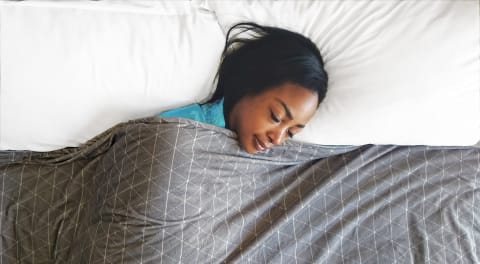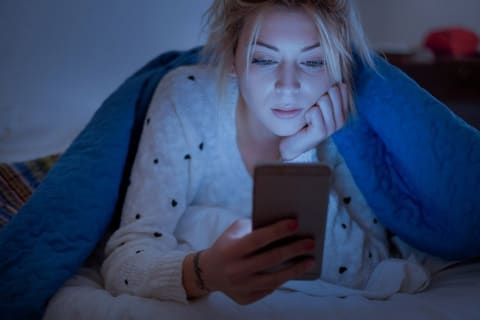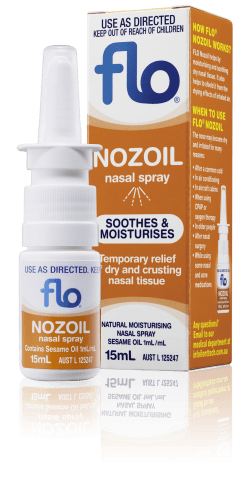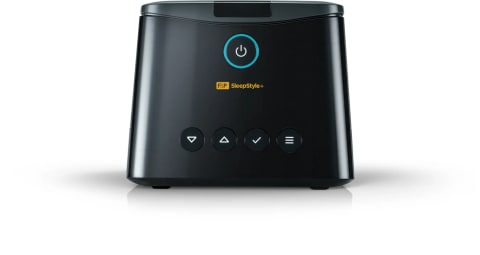CPAP Machine What Is It Used For
If you’ve recently been diagnosed with sleep apnea or suspect that your sleep isn’t as restful as it should be, you might have heard about CPAP machines. These devices are considered the gold standard for treating obstructive sleep apnea (OSA)—but what exactly do they do, and how can they help you sleep better?
At Sove CPAP Clinic, we believe in empowering you with simple, helpful information, so you can make confident decisions about your health. Whether you’re just starting out or seeking to better understand your therapy, this guide walks you through the purpose, function, and experience of using a CPAP machine.
What is CPAP used for and who needs it?
CPAP stands for Continuous Positive Airway Pressure. A CPAP machine is used to treat obstructive sleep apnea, a condition where your airway repeatedly collapses or gets blocked while you sleep. These interruptions can happen dozens—or even hundreds—of times per night, causing you to wake briefly, stop breathing, or gasp for air.
Over time, untreated sleep apnea can lead to:
- Daytime sleepiness and poor concentration
- Morning headaches
- Irritability or mood changes
- High blood pressure, heart disease, or stroke
A CPAP machine helps prevent these events by gently delivering a steady stream of air through a CPAP mask, keeping your airway open all night long.
While CPAP is primarily used to treat obstructive sleep apnea (OSA), it is not typically effective for central sleep apnea (CSA), a less common condition where the brain fails to signal the body to breathe. Your sleep study results help distinguish between the two.
For those diagnosed with obstructive sleep apnea, CPAP is widely recognised as the gold standard treatment. It is effective, non-invasive, and directly addresses the physical collapse of the airway that occurs during sleep. By keeping the airway open, CPAP helps restore regular breathing patterns, improve oxygen levels, and prevent the frequent awakenings that fragment sleep.
OSA is also commonly associated with other health conditions, known as comorbidities. Many individuals who require CPAP therapy also live with obesity, type 2 diabetes, hypertension (high blood pressure), and cardiovascular disease. These conditions are not only more prevalent in people with untreated sleep apnea, but they can also be worsened by poor sleep quality.
How a CPAP machine works
The idea behind CPAP therapy is simple: keep your airway open so you can breathe steadily and deeply all night. Here’s how it works:
The CPAP machine draws in room air and pressurises it gently.
That pressurised air travels through a hose into your CPAP mask (which fits over your nose, mouth, or both). This airflow creates a cushion of pressure in your throat and airway, preventing it from collapsing as you sleep.
During your diagnostic or titration sleep study, specialists monitor how your body responds to various pressures. This data helps determine the ideal settings to stabilise oxygen levels, reduce micro-arousals (tiny awakenings you may not remember), and improve your REM sleep duration. Auto-adjusting machines use built-in sensors to deliver just the right pressure minute-by-minute, adapting as your body shifts position or moves through sleep stages.
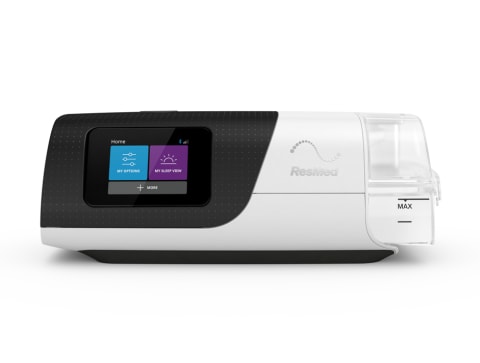 Further $50 Off with code "BOXINGDAY50"
ResMed AirSense 11 AutoSet CPAP Machine
Further $50 Off with code "BOXINGDAY50"
ResMed AirSense 11 AutoSet CPAP Machine
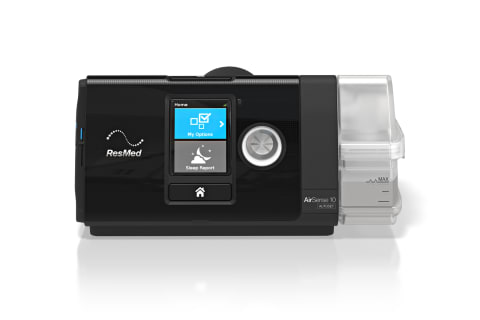 Further $50 Off with code "BOXINGDAY50"
ResMed AirSense 10 AutoSet 4G CPAP Machine
Further $50 Off with code "BOXINGDAY50"
ResMed AirSense 10 AutoSet 4G CPAP Machine
Starting CPAP treatment
Starting CPAP therapy is a big step—but it’s also the beginning of better sleep and better health. Like anything new, there’s an adjustment period. Here’s what to expect:
Your first nights
At first, wearing a mask might feel strange. Some people experience mild claustrophobia or struggle to get used to the air pressure. That’s completely normal. It helps to:
- Use the machine while awake for short periods to get used to the sensation.
- Try the ramp feature so pressure builds gradually as you fall asleep.
- Stick with it! Most people adjust within a week or two with the right support.
Most people adapt to CPAP therapy within 7 to 21 days. If you’re struggling, techniques like “mask desensitisation”—wearing the mask while reading or watching TV—can help you get used to the feel before sleeping. Your CPAP machine also records usage data, which we can review at your follow-up to ensure your settings are right and to spot any issues like mask leaks or high residual apnea levels. This collaborative approach helps fine-tune your therapy.
Reduce common side effects
Modern CPAP machines are designed with your comfort in mind. That’s why the devices we offer at Sove CPAP Clinic come with customisable comfort settings and accessories that make a real difference.
Here’s how they help with common side effects:
Dry nose or mouth
All our machines come with heated humidifiers and many include heated tubing, which keeps air warm and moist. This helps prevent dryness, sore throat, or nasal irritation. If you breathe through your mouth while sleeping, a full-face mask or a chin strap may help maintain therapy effectiveness and reduce dryness.
Mask discomfort
We stock a wide range of mask styles and sizes—nasal pillows, full-face masks, and hybrid options. We’ll help you find one that fits well and feels good on your skin, with minimal pressure points.
Air pressure intolerance
Features like exhalation relief and auto-adjusting pressure help you breathe more naturally and reduce the sensation of pressure build-up.
Noise concerns
All our CPAP machines are whisper quiet, typically around 25–30 decibels. That’s about as loud as a soft whisper—perfect for light sleepers and shared bedrooms.
For those who experience air swallowing or bloating (aerophagia), slight pressure adjustments or enabling exhalation relief can usually resolve the issue quickly.
ALWAYS FOLLOW THE DIRECTIONS FOR USE. CPAP is used for Obstructive Sleep Apnoea treatment. When considering whether a sleep study or CPAP is right for you, speak to your doctor. Medicare criteria and T&Cs apply.
Frequently Asked Questions (FAQ)
What type of water can be used in a CPAP machine?
The best choice for your CPAP humidifier is distilled water. It’s free from minerals and impurities, which means it won’t leave residue inside the water chamber or tubing. Using tap water occasionally won’t harm the machine immediately, but over time, it can cause mineral build-up, reduce performance, and even lead to bacterial growth.
Using distilled water also helps protect the internal sensors in some machines, which could otherwise become less accurate over time due to scale accumulation. Rainwater or filtered tap water, while seemingly clean, can still contain microscopic impurities and should be avoided unless boiled and cooled as a temporary solution.
Which CPAP machines are covered by Medicare?
In Australia, Medicare typically does not cover the cost of CPAP machines. However, Medicare may pay for your diagnostic sleep study, which is often the first step in determining whether you need CPAP therapy.
Some hospitals operate CPAP loan schemes, particularly for people with severe OSA and financial hardship. These schemes often supply a basic model on long-term loan. Even if Medicare doesn’t reimburse, private insurers sometimes require a Medicare item number from your doctor or sleep study to release rebates—so keep those documents handy when applying.
When should you not use your CPAP machine?
There are very few times you should skip CPAP, but here are a few exceptions:
- If you have a severe respiratory infection or congestion that makes breathing through the mask impossible
- After recent facial surgery or nasal procedures, if advised by your doctor
- If you’re feeling unwell and have vomiting or nausea, using a CPAP could pose a risk
- If you’re experiencing ear pain or sinus infections, using CPAP might worsen symptoms temporarily by increasing internal pressure
Always follow your doctor’s advice, and if you’re unsure whether it’s safe to use your machine, contact our team for personalised support.
Do you have to use a CPAP machine every night?
Yes—consistency is key with CPAP therapy. Skipping nights reduces its effectiveness and allows apnoea events to return. The more regularly you use your CPAP, the better your sleep and long-term health outcomes will be.
Skipping even one night of therapy can lead to a return of symptoms like snoring, fatigue, and fragmented sleep. Apnea events can rebound and worsen temporarily after pausing therapy—this is known as the “rebound effect.”
That said, it’s okay if it takes some time to build up to full-night use. If you’re struggling with comfort or waking up and removing the mask, that’s a sign we should help adjust your setup.
Does CPAP remove fluid from lungs?
No, CPAP doesn’t directly remove fluid from the lungs. That’s a common misunderstanding.
Do you have to use a CPAP machine for the rest of your life?
Not necessarily—but for many people, CPAP is a long-term therapy. If your sleep apnea is related to weight, lifestyle, or temporary factors, improvements in those areas could reduce or eliminate the need for CPAP over time.
Some patients are able to stop using CPAP if they make major lifestyle changes—such as losing significant weight, undergoing jaw or airway surgery, or using oral appliances. However, this should always be monitored with repeat sleep studies, as sleep apnea can return silently.
</script>




